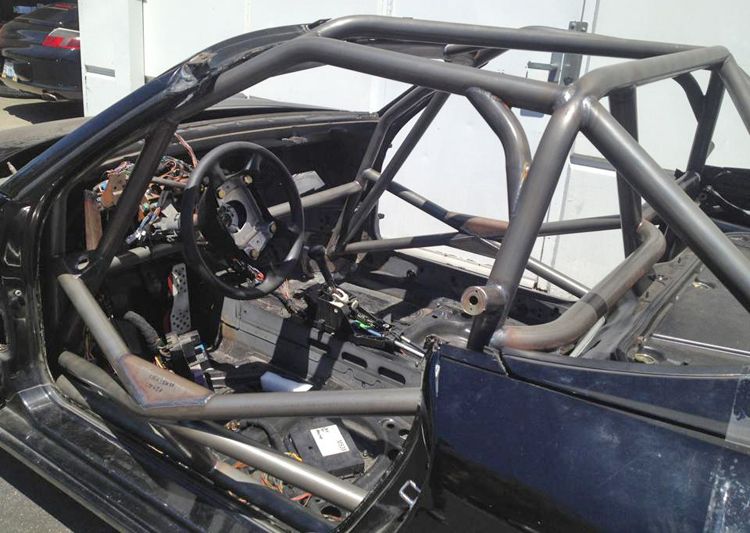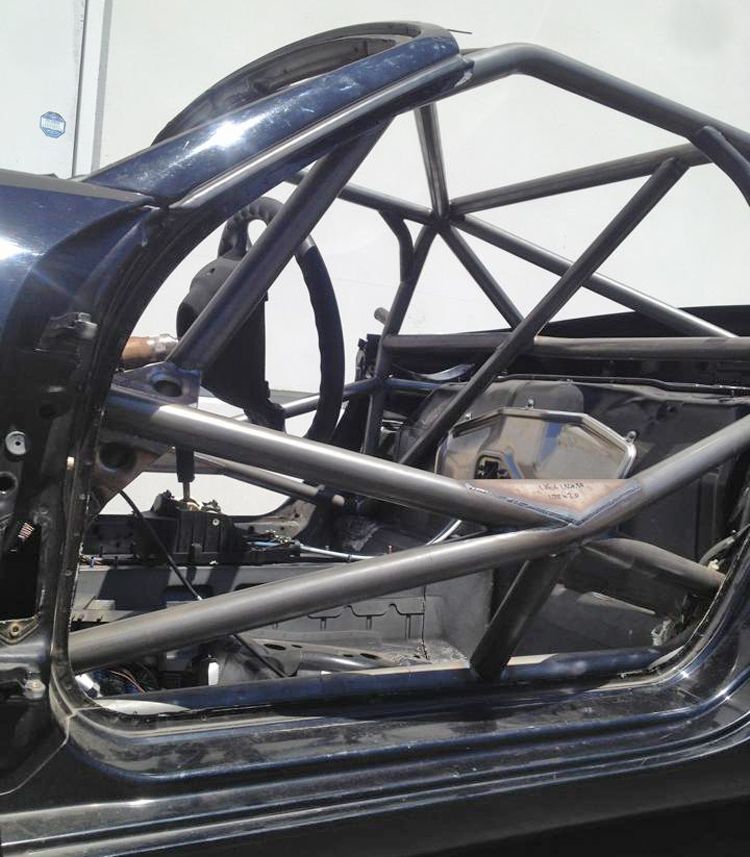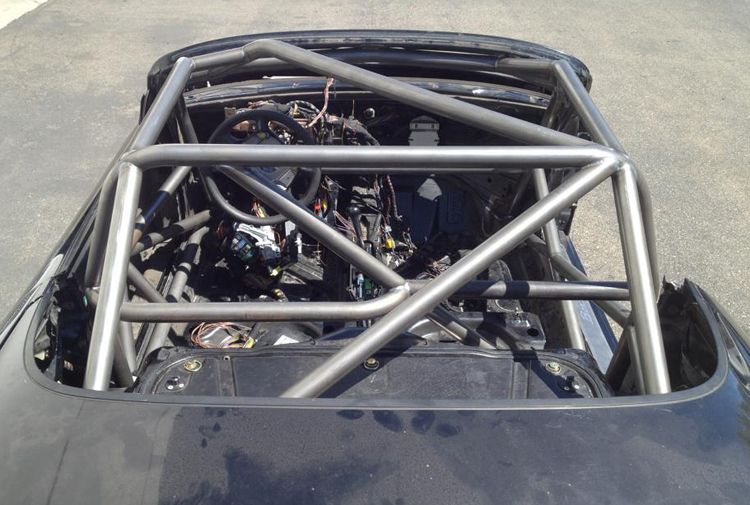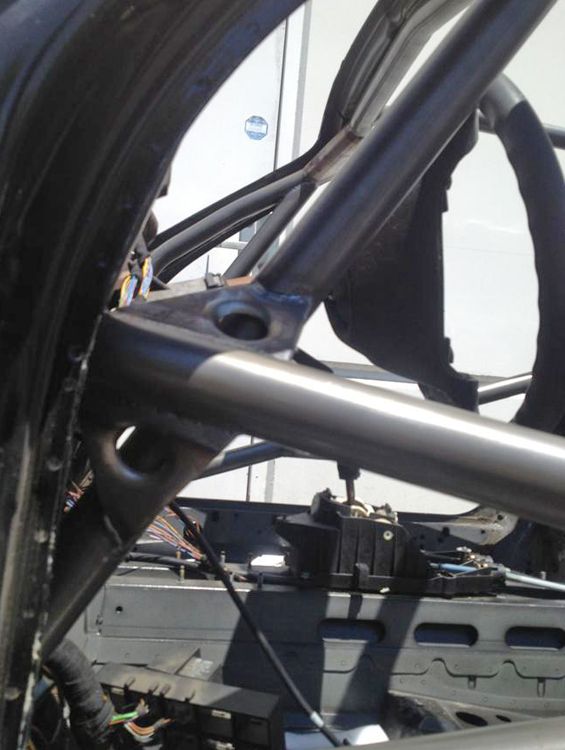Ok, I know that you're saying that you'll only do DE's, but you never know where you or the next owner of your car might end up. Someone buys a car with a cage and is told that it meets PCA Club Racing requirements and thinks that it must be fine. And while impacts are a lot more likely during racing, they do happen in DE's and if you're going to do it, do it right.
Since I just had a huge impact on the track, I'll say you need the best cage that money can buy. Your wife, kids, mom, dad, brothers, sisters, friends, and even your enemies want you to come home uninjured.
A cage is the wrong place to try to save a few thousand dollars.
Take a look at what happened to this Spec Boxster cage that looked great but failed in a rollover:
Roll cage material?
The last thing you want is a cage that meets the minimum requirements - you want a cage that goes well beyond the minimum requirements!
Here are the technical spec's for my roll cage;
- 1.75" tube diameter
- 0.095" tube wall thickness
- 4130 alloy chromolly steel
- Tig welded joints with 70S rod (specialty for 4130 welding)
- 6-point style cage
- Sheet metal gussets in critical areas
- Custom driver's side door bars increase strength compared to standard NASCAR style
- Large area base plates mig welded to structural areas of the chassis
- "A" pillar vertical tubes (aka FIA bar)
- Windshield frame bar, door bars, and main hoop are all stich welded to the chassis for increased rigidity
- "Knee bar" and steering column mounts to replace factory dash bar
Compare the design of that bolt-in cage to the design of my custom cage:



